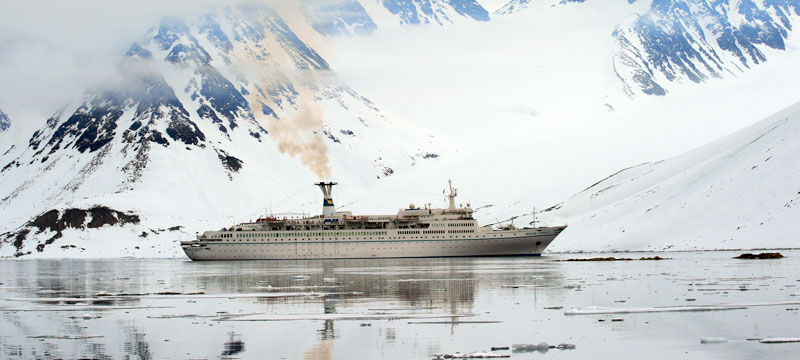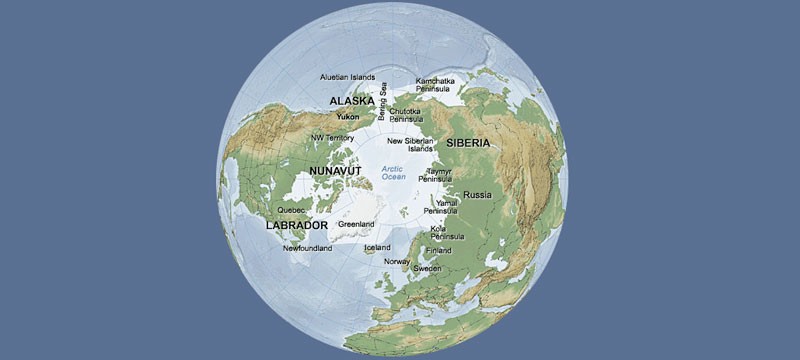The Future of the Arctic (part three)
A multi-part series on Arctic issues exploring governance, policy, oversight, climate, resources, and the challenges for a changing Arctic.

Pangnirtung, Nunavut. Credit: REUTERS/Chris Wattie
When we imagine the Arctic we think of ice — endless vistas of white emptiness, etched by shifting dark lines and blue shadows. It is the place where no one can live and survive, even though people do. And to do so they demonstrate skills and tradition demanded by the environment to provide warmth, shelter, and food as sustenance for families and communities that have survived there for centuries. Ice is their world the way grasslands or tropical forests or coastal marshlands are ours. What right do we have to dismiss them or destroy them? What right do we have to think their lives are less than ours, their wants and needs any less important? How would we react to the destruction of our grasslands, forests, and coastal marshes? How would they feel if we took away their ice?
If we look closely, we might see that we have already diminished those nurturing environments, given over those resources to voracious consumption, to extraction and profits, to urban sprawl. We are paying the price and now they too are faced with results of our indifference.
The statistics and observations are convincing. The dimensions of the ice sheet that stretched around the circumpolar region are diminished by breadth and thickness. The glacial formations too have begun to melt, dropping huge segments like the sides of mountains into the sea. The water temperature increases at record rate year after year. What was solid mass becomes slush and open water, sooner and over a much-increased area, with sea level rise and increased temperatures, with amplifying consequences for flora and fauna and the people who have habituated themselves to past conditions and now must adapt anew.

Russian cruise ship. Norway. Thomas Hallermann | Marine Photobank
The Northwest Passage, a sea route linking the Pacific and Atlantic Oceans, across the top of Canada, is now possible for passage by more than a few explorers and hardy yachtsmen. In 1969, the SS Manhattan, an oil tanker sailing under the US flag, was converted to carry an ice-breaking bow and made the transit from east to west to Prudhoe Bay, Alaska, where she was loaded with a single barrel of oil for the return trip, a demonstration of what might become a lucrative transportation route bringing western oil to eastern cities. In 2016, a giant cruise ship with a thousand passengers made the west to east trip, demonstrating another lucrative opportunity made feasible by the changed conditions of the intervening sea ice. From one barrel of oil to a thousand tourists in less than twenty years; what will the future bring?
This potential raises an enormous number of existential questions for the Arctic. The obvious first ones concern safety and the environment. What happens if there is an accident, an oil spill of any proportion or a grounding requiring passenger evacuation in remotes areas where emergency response is impossible? No equipment, no access, no communications, no infrastructure. The responsible parties — the member nations of the Arctic Council and the United Nations Agencies — have not ignored these questions. They have approved a new Polar Code for ship specifications and safety. They have explored communications options to address emergency needs. They are concerned with the operational aspects of this new situation and in their way they are acting responsibly, albeit slowly, as only bureaucracies can. Designs and funds are pursued for a new generation of ice-breakers to escort vessels in passage, and, amazingly enough, the Daewoo Shipbuilding Company has announced the construction of 16 modern ice-breaking LNG tankers, designed for the Northern Sea Route, the other half of the circumpolar route across the top of Russia, also opening for commercial passage linking the two oceans and bringing eastern oil to western cities.

So there you have it. The assumptions are that the ice will continue to melt, the passages will continue to be open and accessible longer for merchant or expedition ships, and economic and political rights will be exercised without question. Claims and counter-claims regarding the expansion and enforcement of territorial rights will simply refine the presumption that these water ways are national routes for the advancement of national economic and strategic agendas, and all the niceties of collective management, consensus agreement, and environmental and social concerns will be forgotten. Suddenly, the under-lying weakness of Arctic policy is revealed, stripped of its best intentions and lip-service, as yet another example of the old patterns of extraction, exploitation, and profit. The ice is gone, ironically melted by those patterns, and still the indifference to the environment, the indigenous people, and to change remains.
- - -
PETER NEILL is founder and director of the World Ocean Observatory and is author of “The Once and Future Ocean: Notes Toward a New Hydraulic Society.”
- Login to post comments
-


